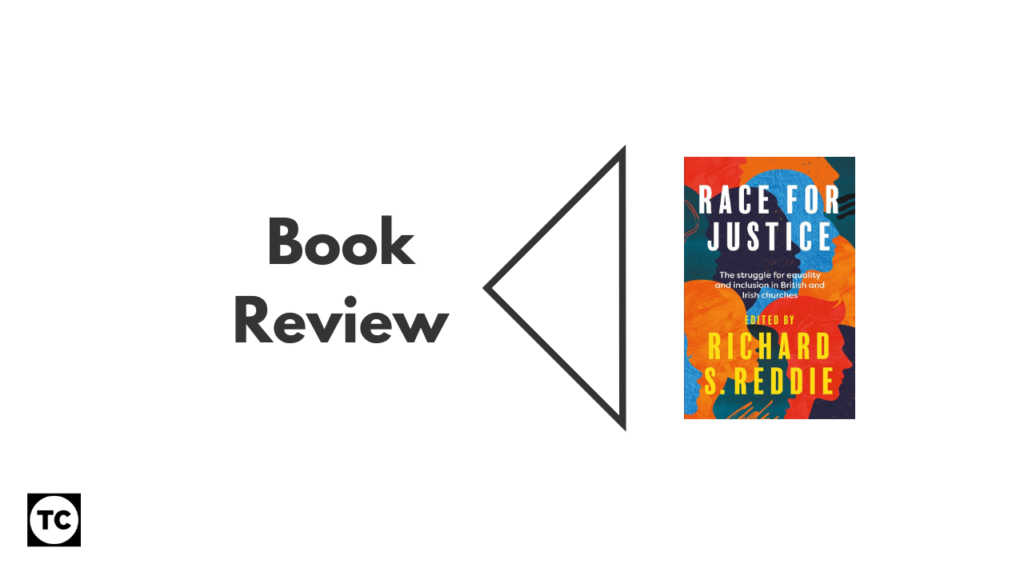This book was published by one of the other imprints at the publishing group I work for – I hope that doesn’t cloud my review.

I’m a big fan of edited collections, and this year I’m trying to diversify my reading and reviewing – so this book of essays from brothers and sisters in various British and Irish churches is one that I thought would be worth my time. To summarise – it was, but it’s not a book that I’ll return to, or would recommend. Harsh? Perhaps. Read on for some thoughts on individual chapters.
Richard S. Reddie introduces the book as “the first scholarly work to provide a thorough examination of what is taking place in all the historic denominations and churches in Britain and Ireland.” A bold claim that I don’t think the book delivers on – it is more historical/theological record/analysis, than scholarly – but it does provide a useful snapshot and ‘way in’. Rosemarie Mallett – the Church of England Bishop of Croydon – offers a largely historical chapter that makes for sobering reading. Confronting racism is one of a number of major moral challenges facing the Church of England. Inderjit Bhogal offers a Methodist perspective. Sobering to reflect that non-White Methodists (as has so often been the case) kept many chapels alive. I agree with Bhogal that “racial justice is a cry and call of God that demands responses at the heart of worship and prayer, theology, and preaching”. Wale Hudson-Roberts’ chapter ‘British Baptists and Insitutional Racism’ is focused on the Baptist Union, and comprises a range of historical angles, a historic apology, and a helpful consideration of the question “So What is Institutional Racism Among Baptists?” I did appreciate Hudson-Robert’s’ closing words as “Black, Brown and White Baptists united in the image of God”. A strong chapter.
Peart and Parker’s chapter on the Quakers (A movement I know very little about) is fascinating – I don’t know any Quakers personally. “That racial equality remains aspirational is a sobering truth” – this reflection seems to be the case in nearly all churches. Interesting split (From both an editorial and methodological perspective) in reflection between Peart and Parker (the latter being a white man). Zipfel’s chapter on the Catholic Church is impressive in terms of its diversity and historical breadth. I agree that “wherever the Word is spoken and heard, a seed is planted for a more just, more equal, more cooperative society”. Ackroyd’s contribution on the URC is notable for the observation that “We grew spiritually because of growing insights into each other’s spirituality” – not all chapters have a spiritual/theological component. Sturge offers a personal reflection on Black Majority Churches – a key part of the ecclesial landscape in Britain today. Page 105 had the highest concentration of scripture references in the book so far! A sobering and intriguing chapter that ends hopefully. Trotman’s ‘An Ecumenical Journey’ is largely too personal to be particular useful other than historical interest, but his closing words are a provocative challenge: “The global witness to the truth that Black Lives Matter all points to the imperative to act”. Readers may differ on what those actions should be.
Ralph opens her chapter on the Church of Scotland by considering various resolutions passed: “What is unclear is whether these have had any impact”. Sobering to see an implicit recognition of the decline of the Church of Scotland. Edwards chapter on Wales is largely descriptive – packing a lot in! It’s worth noting that the non-English nations do somewhat get squeezed in this book – as is often the case – but some churches cross national boundaries. Jackson’s chapter on Ireland is I think the only one to offer a definition of racism. Good historical overview. As Jackson writes, “the next challenge is to move from welcome to inclusion”. Smith’s chapter on the Salvation Army is a fascinating insight into both the SA in general and the complexity of racial justice issues within it. “This territory, and indeed the wider Salvation Army, has a long journey ahead in order to make this statement a living reality”. Daly’s chapter on the Seventh Day Adventist church particularly highlights a cultural theological distinction – immigrant Adventists were more zealously evangelical than the indigenous British members! Rajagopalan’s closing chapter on South Asian Christian’s is interesting. It has explicit evangelistic/evangelical impetus, and also unashamedly links non-Christian religions to the question of race. Very helpful.
A couple of themes emerge. Firstly, the injection of new blood (literally, new people!) into old denominations has been important for the stemming of decline – particularly in Methodist and Anglican contexts. Secondly, These non-indigenous disciples tend to be more zealous – and evangelistic! Thirdly, the methodology in most of these chapters is descriptive history – whilst helpful, it does raise the question of who this book is for. I would have liked to have seen Reddie, or someone else, offer a coda to draw things to a close. This is a book that I’m glad I read, but I’m not quite sure who it’s for, other than perhaps the historians.
Leave a Reply